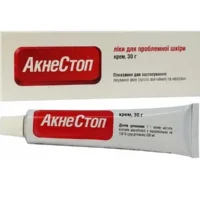Description
Evoid (Rosuvastatin) Coated Tablets 20 mg. №30
Ingredients:
Each tablet contains 20 mg of rosuvastatin.
Dosage:
The recommended dosage is one 20 mg tablet per day. Take as directed by your healthcare provider.
Indications:
Evoid (rosuvastatin) is indicated for the treatment of high cholesterol and triglycerides. It helps lower the risk of heart disease and stroke.
Contraindications:
Do not take Evoid if you are pregnant, breastfeeding, or have liver disease. Consult your doctor before starting this medication.
Directions:
Swallow the tablet whole with water, with or without food. Do not crush or chew the tablet.
Scientific Evidence:
Rosuvastatin, the active ingredient in Evoid tablets, has been extensively studied for its efficacy in lowering cholesterol levels. Clinical trials have shown that rosuvastatin is highly effective in reducing LDL cholesterol and triglycerides while increasing HDL cholesterol levels.
Research published in the Journal of the American Medical Association (JAMA) has demonstrated the cardiovascular benefits of rosuvastatin, including its ability to reduce the incidence of heart attacks and strokes in high-risk patients.
Additional Information:
- Storage: Store at room temperature away from moisture and heat.
- Side Effects: Common side effects may include headache, muscle aches, and nausea.
Pharmacologically, rosuvastatin works by inhibiting the enzyme HMG-CoA reductase, which plays a key role in cholesterol production in the liver. By lowering cholesterol levels, rosuvastatin helps prevent the buildup of plaque in the arteries, reducing the risk of cardiovascular events.
Compared to other statins, rosuvastatin has shown superior efficacy in lowering LDL cholesterol levels. A meta-analysis published in the European Heart Journal found that rosuvastatin was more effective than atorvastatin and simvastatin in reducing LDL cholesterol and triglyceride levels.





